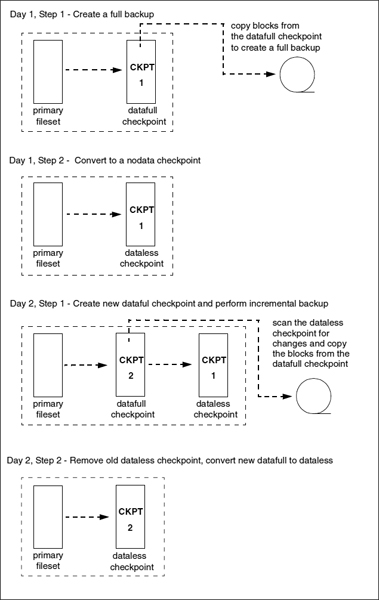Hierarchical Storage Management
Although not strictly a backup-related feature, Hierarchical Storage Management (HSM) provides an archiving facility that can be used in conjunction with backup software to minimize the amount of data that is transferred from the filesystem to tape. This technique is employed by the VERITAS NetBackup (NBU) and Storage Migrator products.

Figure 12.5 Performing an incremental backup using VxFS storage checkpoints.
Introduced many years ago when disk prices were much higher, HSM applications are to physical disks what virtual memory is to physical memory. HSM applications monitor the filesystem and migrate files off to tape (or other media) based on a set of policies. For example, an administrator can set a policy that specifies that once the filesystem becomes 80 percent full, files older than 60 days are targets for migration. The HSM application moves the data associated with the file off to tape. The user can still see the files that are migrated and is unaware that the data is no longer on disk. If the user then attempts to access the data, the data is migrated back from tape before the read or write can be processed.
The Data Management Interfaces Group (DMIG) [DMIG97] produced a proposal, adopted by X/Open, which provides a set of APIs (DMAPI) that operating system and filesystem developers can implement to ease the job of HSM developers. The ...
Get UNIX Filesystems: Evolution, Design, and Implementation now with the O’Reilly learning platform.
O’Reilly members experience books, live events, courses curated by job role, and more from O’Reilly and nearly 200 top publishers.

